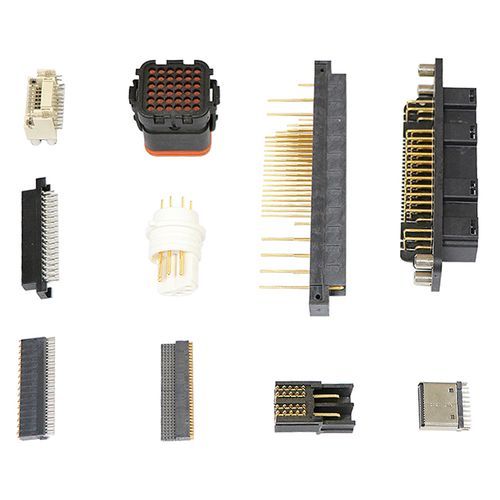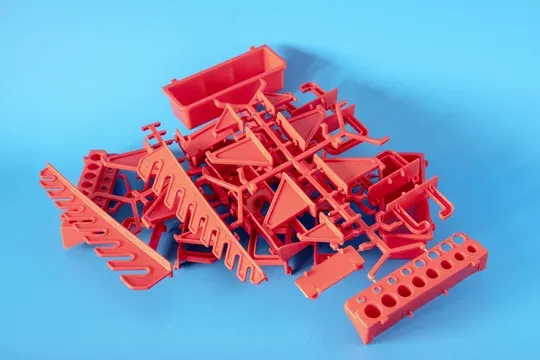Unlock your product's potential with our One-stop solutions!
+86-755-83222882

GET QUOTE
What is the Difference Between Injection Molding and Rotational Molding?
In the world of plastic manufacturing, choosing the right molding process is crucial for achieving the desired product quality and cost-effectiveness. Two of the most commonly used methods are injection molding and rotational molding. While both processes are highly effective, they serve different purposes and are suited for various types of projects. In this article, we’ll explore the differences between these two molding techniques, their advantages, and which one might be the best fit for your manufacturing needs.
Understanding Injection Molding
What is Injection Molding?
Injection molding is a manufacturing process in which molten plastic is injected into a mold cavity under high pressure. Once the plastic cools and solidifies, the mold is opened, and the finished part is ejected. This process is widely used for producing large volumes of identical parts with high precision.
Injection molding is particularly popular in industries such as automotive, electronics, and consumer goods, where high production efficiency and consistent quality are critical. The molds used in injection molding are usually made of steel or aluminum, and they can be designed to produce complex shapes with tight tolerances.
Advantages of Injection Molding
- High Production Efficiency: Injection molding is ideal for mass production. Once the mold is made, thousands or even millions of parts can be produced quickly with minimal variation.
- Precision and Consistency: This process allows for precise control over the shape and size of the parts, ensuring consistent quality across large production runs.
- Material Versatility: A wide variety of thermoplastics can be used in injection molding, making it a versatile option for different applications.
- Complex Part Design: Injection molding can produce parts with intricate designs, including undercuts, threads, and complex geometries.
Disadvantages of Injection Molding
- High Initial Cost: The cost of designing and manufacturing the mold can be high, making it less economical for small production runs.
- Lead Time: The process of creating the mold and setting up the production line can take time, which may not be suitable for urgent projects.
Understanding Rotational Molding
What is Rotational Molding?
Rotational molding, also known as rotomolding, is a molding process used to create hollow plastic parts. In this method, powdered plastic resin is placed inside a mold, which is then heated while being rotated around two perpendicular axes. The rotation evenly distributes the plastic along the inner surfaces of the mold, forming a uniform, hollow part once cooled.
Rotational molding is particularly well-suited for producing large, hollow objects such as tanks, containers, playground equipment, and automotive parts. The molds used in rotomolding are typically less expensive and made from aluminum or steel.
Advantages of Rotational Molding
- Cost-Effective for Large Parts: Rotational molding is often more economical for producing large, hollow parts compared to other molding methods.
- Uniform Wall Thickness: The rotational process ensures that the plastic is evenly distributed, resulting in consistent wall thickness and strength.
- Design Flexibility: Rotomolding allows for the production of complex shapes with varying wall thicknesses, and it can incorporate inserts and multiple layers.
- Low Tooling Costs: The molds used in rotational molding are generally less expensive to produce than those used in injection molding.
Disadvantages of Rotational Molding
- Longer Cycle Times: Rotomolding typically has longer cycle times compared to injection molding, making it less suitable for high-volume production.
- Limited Material Options: While rotational molding can use a variety of plastics, it is more limited compared to the range of materials available for injection molding.
Comparing Injection Molding and Rotational Molding
Production Volume
One of the primary differences between injection molding and rotational molding is the production volume. Injection molding is highly efficient for mass production, capable of producing large quantities of parts in a short time. In contrast, rotational molding is more suitable for lower production volumes or large parts where the cost of high-volume production might be prohibitive.
Part Complexity
When it comes to part complexity, injection molding offers greater precision and the ability to create intricate designs with tight tolerances. This makes it ideal for producing small, detailed parts that require a high degree of accuracy. Rotational molding, on the other hand, is better suited for simpler, larger parts with fewer intricate details. It excels at producing hollow parts with uniform wall thickness.
Cost Considerations
Rotational molding typically has lower tooling costs, making it a cost-effective option for smaller production runs or large, hollow parts. However, the longer cycle times can increase the overall production cost for high-volume orders. Injection molding, while having higher initial tooling costs, becomes more economical as production volume increases, thanks to its faster cycle times and efficiency.
Material Selection
Both injection molding and rotational molding offer a range of material options, but injection molding has a broader selection of thermoplastics available. This makes it more versatile for applications requiring specific material properties such as strength, flexibility, or chemical resistance. Rotomolding is generally limited to a narrower range of materials, though it can still produce durable and weather-resistant parts.
Application Suitability
The choice between injection molding and rotational molding often comes down to the specific requirements of the project. Injection molding is ideal for high-volume production of small, detailed parts with complex geometries, such as automotive components, medical devices, and consumer electronics. Rotational molding is better suited for producing large, hollow parts like storage tanks, kayaks, and outdoor furniture, where uniform wall thickness and durability are critical.
Choosing the Right Molding Process
When to Choose Injection Molding
- High-Volume Production: If your project requires the production of a large number of parts, injection molding is likely the best choice due to its efficiency and speed.
- Complex Geometries: For parts that require intricate designs, tight tolerances, or multiple components, injection molding provides the precision needed.
- Material Versatility: If your project requires a specific thermoplastic material with unique properties, injection molding offers a wider range of options.
When to Choose Rotational Molding
- Large, Hollow Parts: For products that need to be hollow and have a consistent wall thickness, such as tanks or containers, rotational molding is the ideal choice.
- Lower Tooling Costs: If you're working with a smaller budget or lower production volumes, rotational molding's lower tooling costs can be advantageous.
- Flexibility in Design: Rotational molding allows for more flexibility in wall thickness and the incorporation of inserts, making it suitable for a variety of large-scale applications.
Conclusion
Choosing between injection molding and rotational molding depends on the specific needs of your project, including production volume, part complexity, and material requirements. Both processes have their unique advantages and are suited for different applications. If you’re looking to produce high-volume, intricate parts with precision, injection molding is likely the best fit. On the other hand, for large, hollow parts with uniform wall thickness, rotational molding may be the better option.
At SZOMK, we specialize in providing high-quality injection molding and rotational molding services to meet the diverse needs of our clients. Whether you need precision-engineered parts or durable, large-scale products, our team of experts can help you choose the right molding process and deliver exceptional results. Contact us today to learn more about how we can assist with your next manufacturing project.


